There was already a railway running through the Hither Green area, built in the mid-1860s, but no station, so there hadn’t been much development. It was still mostly open fields and a few large houses built by those rich enough to be able to escape the pressures of London living. That all changed in 1895, when the South Eastern Railway finally decided to build a station, and call time forever on the rural way of life. Within a year Archibald Corbett had started an enormous building project, which would eventually stretch for a mile south of the station, and half a mile in width below Brownhill Road, the main east-west thoroughfare in the area. He would build over 3,000 houses in this, the largest of his seven developments by population.
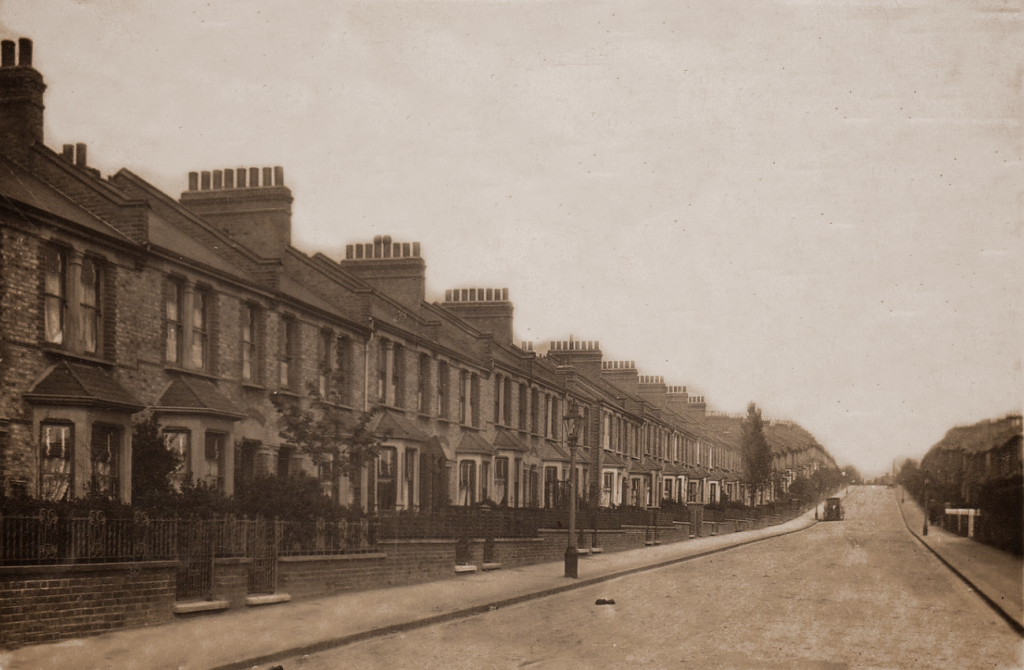
What we in Catford and Hither Green call “The Corbett Estate” actually began life with a rather different name: ‘St Germans’. I don’t think anyone knows when the official name was lost – it was probably a slow process over a period of years as the area around the estate became more built up and it slowly lost its distinctive identity. ‘St Germans’ was chosen to commemorate the landowner from whom Archibald bought the farmland for his houses – a whopping 278 acres. Henry Eliot was the 5th Earl of St Germans, and took his title from the parish where he lived in Cornwall. The parish in turn was named after the French bishop of Auxerre, Germanus, who came to Britain shortly after the Romans left around 410AD, and was canonized for various worthy deeds. There can’t be many south London housing estates named after a 5th century French saint!
Once he’d bought the land, Corbett set about doing some deals with the railway company to make his future estate more attractive to commuters. In March 1896 he loaned South Eastern Railway (SER) £3,400 to build a second entrance to the station on Springbank Road, which would be more convenient for the estate. He also negotiated ten years of reduced season tickets (£2 off first class and £1 10s off second class, while third class tickets could ‘be purchased by residents on the estate at the cheap Catford Bridge rates’) 11. It was actually fifteen years later that the deals ended, when the Secretary of SER informed the board that “the concession is the only one of its kind on the company’s system, and the agreement … has caused considerable dissatisfaction amongst season ticket holders who did not happen to live on that particular estate” 12.
So far, the model was very similar to the Ilford estates. But at St Germans, Archibald decided to try a different approach to building the actual houses. Instead of using a contractor like Robert Stroud, he initially experimented with employing the workers on the estate directly. Now two years into his job as Agent’s Clerk in Ilford, William Browning takes up the story: “…we learned that a new Estate, the St Germans Estate, Hither Green and Catford, S.E. was being started, and that a new method of building was to be tried. Up till now, the Builders had been building by contract, financed by Mr Corbett; now he tried a different method. He had a large temporary Office and Canteen built, and appointed Mr Walker as architect, and Mr Gee as Surveyor, and a staff of clerks, at Hither Green. Finding at the end of twelve months that Whinney Smith & Whinney [Corbett’s accountants], reported a loss of £3,000, he sent a Postcard to Mr Walker: “Everybody at St Germans to receive a week’s notice, except George Browning of Ilford”. When Mr Walker enquired “What about me?” he informed him that it included him.” 13
So the regular model, of employing a contractor, was resurrected. Corbett must have been very pleased to come across James Watt, a Catford builder who was a fellow Scot, and who went on to build around a third of the estate. Another large scale contractor was Frederick Taylor, who lived on the estate in Wellmeadow Road. There is evidence that quite a few chunks of the estate’s land were sold on to other companies for development, but it’s also clear that Corbett exercised strict control over what they were allowed to build, which meant it was kept carefully in step with his overall plan. House dimensions, costs and materials were specified and plans had to be approved by Corbett’s managers.
As the houses went up, staff were sent from Ilford to do the marketing, sales and rentals. One of them was William Browning’s elder brother George – referred to in Archibald’s postcard above. William recalls his brother’s early experiences south of the river: “At first he had to take lodgings, until a small brick and corrugated iron building had been erected for him to occupy, with office attached, on a very remote part of the estate at the Lewisham end of Brownhill Road…A room at the back was furnished with a bedstead and chair and table. There was no floor covering. Food was purchased in Lewisham. Although water was laid on, for some time after he moved in there was no main drainage in the road. Mr Corbett called one day and said he was to have the Daily Telegraph to prevent him feeling lonely”.
Another key Corbett employee was the veteran Ilford agent, Robert Pettigrew. Browning comments that “The Clementswood Estate Office was closed, as the estate was nearing completion, and Mr Pettigrew was sent to live, and open an Estate Office, on the St Germans estate at an old farmhouse, taking with him his daughter Marion, then about 20 years old…who was now to be her father’s clerk.” Corbett was clearly very attached to Mr Pettigrew (a Scotsman, obviously), and Corbett’s son remembers that, when it came to selling the houses, Pettigrew could be willing to bend the rules: “Often prospective buyers were unable to put down the small deposit, but if Pettigrew thought they had honest faces, he waived the deposit and granted possession. My father claimed that Pettigrew was ‘an infallible judge of human character’”.
The ‘old farmhouse’ (Eliot Lodge) that Pettigrew and his daughter went to live in was built by the Shepherd family in 1867. The Shepherds were the last tenants of North Park Farm, which occupied the majority of the land sold to Corbett by the Earl of St Germans. Amazingly, it’s still standing today – on the corner of Duncrievie Road and Hither Green Lane – but the actual farm buildings (at the other end of Duncrievie Road) are long since gone: in fact they were knocked down to build the new station entrance. Opposite the farmhouse/Agent’s office was the Steam Joinery where timber destined for the roofs, joists and doors of the houses could be prefabricated.
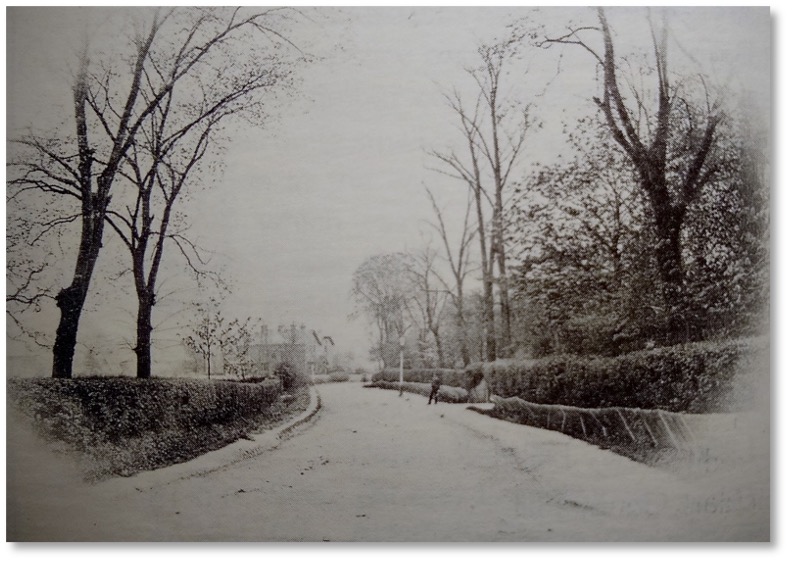
Yet another Ilford secondee was a Mr H. Clark, who ran the brickfield that supplied the housebuilders. He too was drafted into service at St Germans, to start a brickfield there, but unfortunately there’s no record of exactly where it operated.
By 1899 building work was proceeding apace, and the estate came to the notice of one of Charles Booth’s researchers. Booth was a social reformer who was mapping London’s housing in terms of how well off the occupiers were, in order to gain a more accurate picture of poverty in the city. The researcher, Ernest Aves, teamed up with a local policeman, PC Lloyds, and walked with him on his rapidly expanding Lewisham beat. In November 1899 he described the development: “Duncrievie Road brings us to the beginning of the St Germans Estate, which is being rapidly laid out according to the general plans of a large speculative builder – Mr Corbett. There is much sub-letting of the work and several builders are said to be at work on the estate, but the man just mentioned is the contractor and speculator in chief. It is said that when all has been built over, there will be something like 3,000 houses … The heads of the households go mainly citywards to work. No licensed house is allowed on the estate and it is, I believe, Mr Corbett who has enforced this provision … There are two shopping centres, one in Springbank Road, which has a kind of Parade, called ‘The Market’, at the north end, and a similar centre is being made in part of Brownhill Road with the name of The Pavement. The latter is rather for the future, but neither are yet very flourishing”.14
Aves and PC Lloyds wandered up across Brownhill Road, which he described as “the swell road of the Estate, red as far as covered” (red denoted the second-highest of seven categories of occupant – what Booth called ‘middle class well-to-do’) to Sandhurst Road near the corner with Ardgowan Road: “On the south side the site for an English Church is being marked out [actually this was for the mission church rather than the main church, which was started a few years later], and the rest is a chaos – of houses half built, a mason’s yard, stacks of timber, piles of bricks (of indifferent quality) and unmade roads, with, for sounds, the noise, loud or rasping, of hammer and mallet and saw. In a year or two there will be quiet streets, and dozens of houses with, doubtlessly, wives in most of them waiting according to their temperament, bored, gossiping, or busy through the long day, for their husband’s return”.15
As the houses were completed, or maybe even before if people were willing to buy ‘off-plan’, the sales team would swing into action. William Browning explained how it worked in Ilford, and the procedure in St Germans would have been very similar: “It was explained to enquirers that having purchased the whole estate at a certain price, Mr Corbett made the roads and covered all the actual expense of building the houses, and selling them at 33 % below the actual cost by selling the ground rents he thus created in bulk. The leasehold granted was 999 years. If a purchaser bought the Freehold, he therefore lost this benefit; but as in any case the houses were cheap we had many freehold sales.”
Callers at the Estate Office at Hither Green could pick up a little sales booklet, which gave details of the houses and figures for purchasing the various sizes, from three to six bedrooms: ‘Each house is completely fitted up with Drawing and Dining Room Gasoliers, Hall Lamp and Bedroom Gas Brackets, so that purchasers are saved the usual expense for such fittings… The front gardens are turfed, and trees and shrubs are planted.’ 16
Prices were based on the width of the house frontage. In 1898 you could get a 47ft frontage Villa (6 beds) for £379; a 29ft house (4 beds) for £298; a 24ft frontage 4-bedder for £252; and a 3-bedder (added in 1903) for £248. These prices were Leasehold – you had to pay yearly Ground Rent on top of the purchase price, at around £5 for the 4 bed houses (as a reference, a dustman on the estate earned around 15 shillings a week – £39 a year). To buy your house Freehold you had to multiply the ground rent by 24 and add that sum to the regular purchase price. If those prices sound rather a steal, that’s because by the standards of 2019, they are! Just taking into account regular inflation, a freehold four-bedder (around £400 in 1905) should in today’s money cost around £45,000, but actually would set you back something like 15 times that figure, which gives you an idea of how much the value of property has risen in the last hundred-odd years.
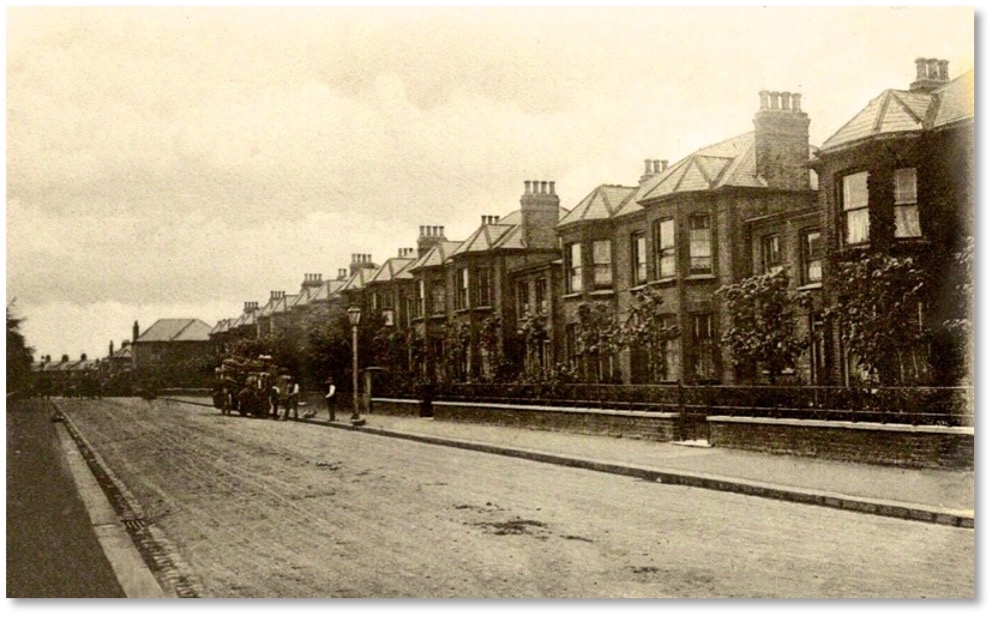
The company bent over backwards to make the houses easy to purchase: as well as the 33% discount for leasehold (recouped by ground rent over the coming years of course), they also offered loans, which presumably came from Corbett’s own resources. A new Act of Parliament in 1899 (the Small Dwellings Acquisition Act) also allowed local Councils to advance mortgages, so someone buying a Corbett house could defray much of the immediate cost through the two loans plus the ground rent. They could then end up paying less per month overall than someone closer in to the centre would pay on rent alone, so maybe it’s not surprising that there were plenty of buyers.
The roads were laid out in a grid (keeping everything in straight lines was the most economical way of building), and Archibald specified that wherever possible they should run north-south, so that morning and evening sunlight was maximised for the occupants. Harking back to his days studying sculpture, he adorned many of the arches over the front doors with a decorative keystone featuring a classical-looking face. There are many different designs, both male and female, and they remain a much-loved feature of the estate. Also perhaps harking back to his youth, he had thousands of lime trees planted in the front gardens, next to the wrought-iron railings topping low walls, which could be a reference to the Parisian boulevards of his continental tour. Or maybe they’re part of his desire to create a healthy environment: the sales booklets boasted of lower death rates on the Corbett estates than the borough-wide averages, and of their often lofty positions above sea level. The gardens (both front and back) were generous, and the Lease specified the duties of a resident in terms of maintenance: ironwork had to be regularly repainted for example, and internal decoration kept up as well.
Of course you could argue that all this was just a sales pitch, or designed to prevent the new estate going downhill and therefore making the houses harder to sell. But if his only focus had been on making money, I think he could have packed in far more houses and charged higher prices.
Another way in which Corbett stamped his mark was to give the 27 streets Scottish names: Duncrievie we’ve already heard of, then there was Hafton (a castle near Cove), Merchiston (a suburb of Edinburgh), Glenfarg (a village in Perthshire), Birkhall (the Scottish retreat of the Prince of Wales)and many more. This shows a confidence and pride in his heritage which was quite different to the royal residences theme his father chose for Woodgrange. Archibald’s son remembers that the ubiquitous Robert Pettigrew was in cahoots with his dad in this matter: “They named the streets on their estates after the villages of their youth – Ardgowan, Wellmeadow, Torridon, Arngask and so on”.17
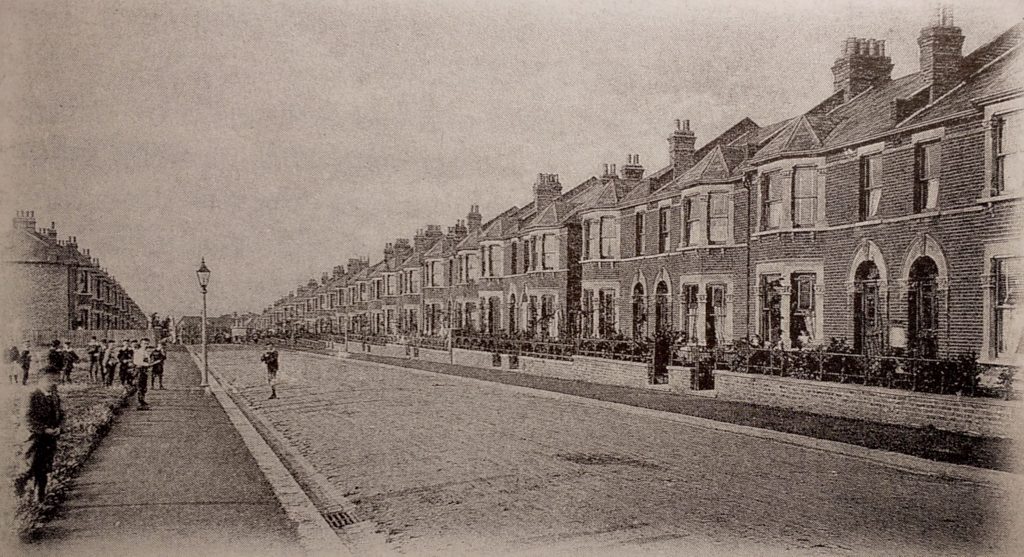
What emerged in Catford and Hither Green was an ordered community with a variety of house styles to fit the class differences of the day. The “swell road” as Ernest Aves put it (Brownhill) was full of 6-bed villas and in 1911 62% of the houses had at least one live-in servant. That contrasts markedly with the ‘working class’ street of Sandhurst, where less than 2% had servants (although many of the residents were servants elsewhere).
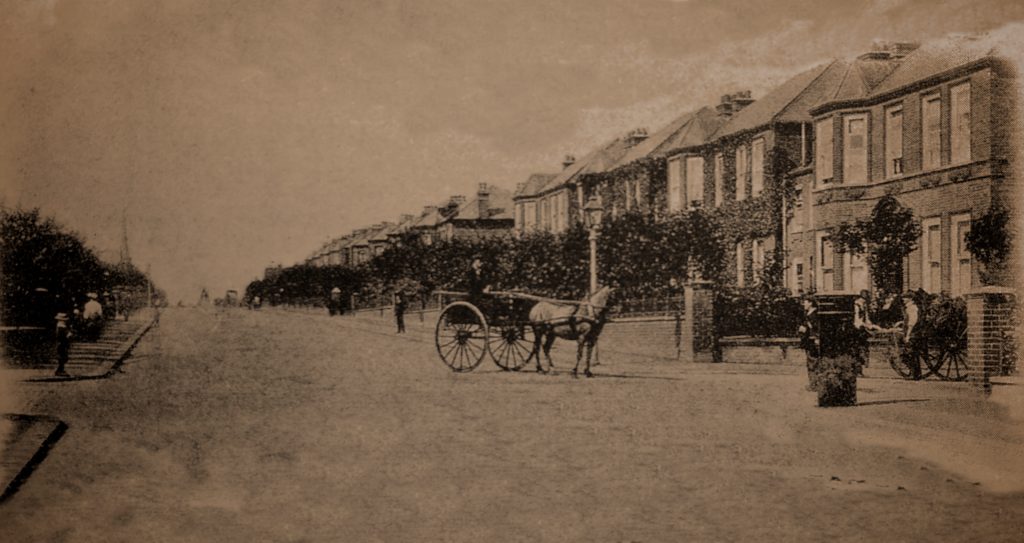
The houses were well-built and there was plenty of greenery, but I’m not sure you could have called it an exciting place to live. There were no pubs and not much open space, but Corbett did try to inject some (healthy) entertainment in the form of a Recreation Ground, right in the centre of the estate, which he opened in 1899. It covered 2 acres and was equipped with 8 tennis courts, 2 bowling greens, and 2 croquet lawns. There was even a fountain in the middle of it all. Residents paid a subscription of 7 shillings and sixpence a year, but for that got access to open-air concerts and sports days as well as the other facilities.
Churches began to spring up due to popular demand: seven in all were built on the estate, often preceded by a ‘mission’ building to test the religious waters. If it proved popular, funds could be raised for a more permanent building. The largest, Anglican St Andrews, was opened around 1904 at a cost of roughly £10,000. It’s surely no coincidence that it was named after the patron saint of Scotland.
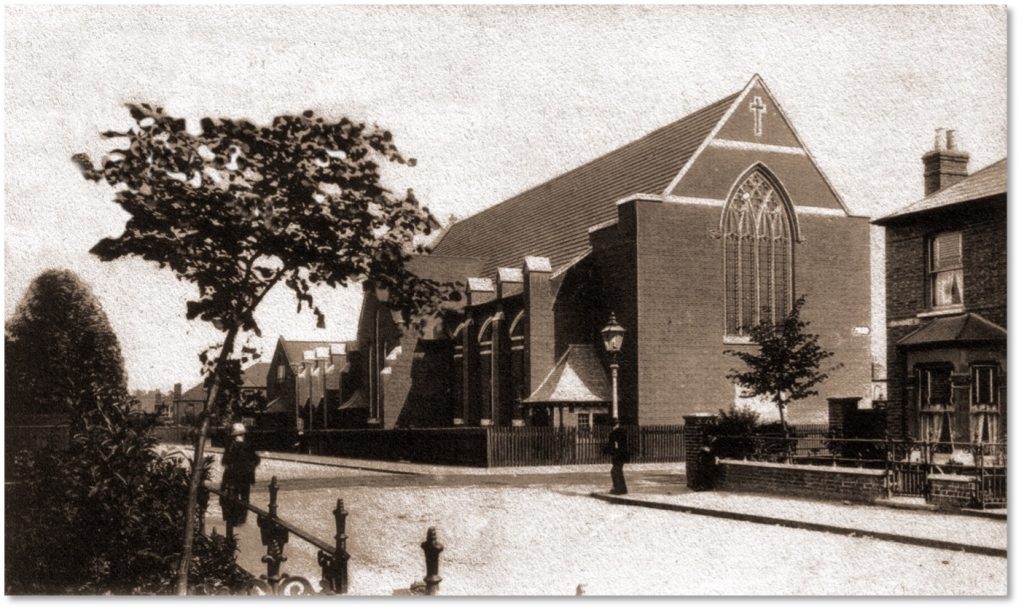
Schools too were suddenly needed, since the area appealed to those with young families: four were built – at Torridon Road, Sandhurst, Abbotshall (in the playing fields area) and Hazelbank (where the allotments stand today). The latter was a temporary structure of corrugated iron, and probably the Abbotshall one was too.
By April 1911 when the estate was pretty much completed, the 13,569 new residents also had plenty of shopping opportunities at six different parades, on Ardgowan, Muirkirk, Torridon, Sangley, Springbank and Verdant Lane. There were bakers, post offices, fishmongers, tobacconists, watch repairers, hairdressers, oilmen, grocers and more, but very definitely nowhere selling alcohol of any description.
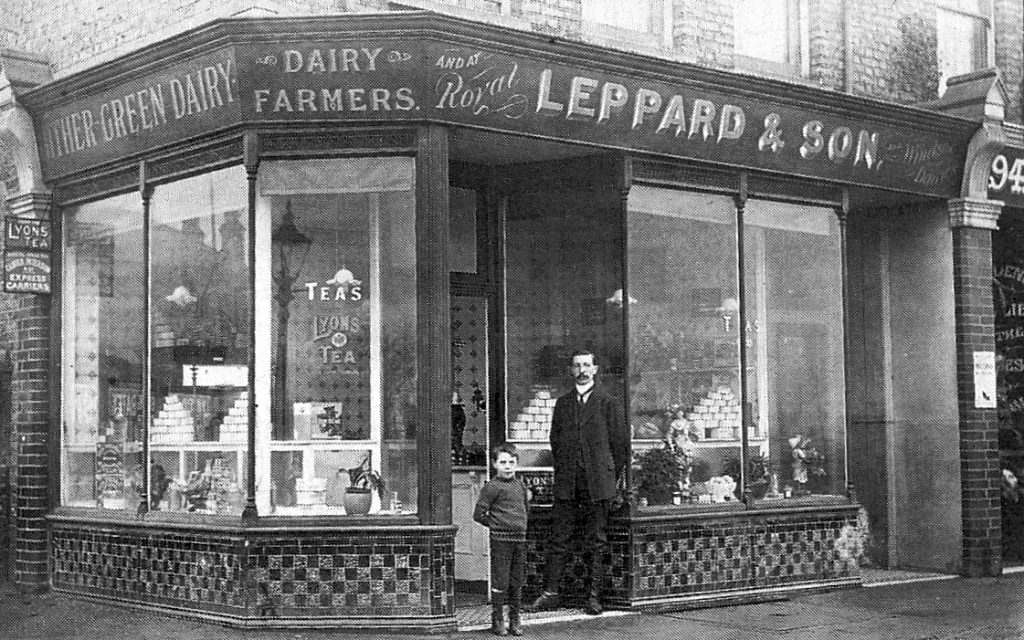
In addition to the shops, there were a multitude of street vendors who could provide service to your doorstep – home deliveries are nothing new! The various tradesmen were recalled by one of the first residents, Harry Sutton, who moved into No 81 Arngask Road with his parents and sister Rhoda in 1899 aged five: ‘About 7.30am every morning the hot-roll boy would herald his presence in the road with the mournful cry of “Hot ROLLS – any hot ROLLS” and then, after a deep breath…”ALL hot!” And in winter about 5pm the muffin man’s bell would be heard, and I would rush out sometimes with 2d as a special treat from my mother to buy some muffins or crumpets for tea, which the man would produce from the green-baize covered tray carried on his head.
During the day all the tradespeople called, the milkman first in his chariot style vehicle with its large shining brass churn. From this he filled the oval pewter container inside which hung a half-pint pewter measure with which to ladle the required amounts into the household jugs. He repeated his call in the afternoon, and whatever the retailing of milk may have lacked in hygiene it certainly made up for in frequency.
Mr Gosling, the grocer, and Mr Erridge, the butcher, arrived soon after breakfast for the day’s order, which would be made up and delivered later, by the grocer’s boy with a box tricycle, but by the butcher’s assistant on a fast trotting cabriolet-style vehicle much hated by elderly ladies for its dangerous speed. Cracknell the greengrocer called three times a week, carrying to the door a display basket set out with their seasonal produce. Cracknell had a large two-horse van, hung about at the tailboard with dangling baskets of potatoes and other earthy produce, leaving the van interior for the more delicate wares. Atfield the oilman called once a week, and if my mother faltered in her requirements, he would jog her memory with ‘Soap, soda, starch or matches?’ You could smell his van from far off because of the large drum of paraffin alongside an equally large container of vinegar, a characteristic mingling of odours I can still conjure up.
The baker was also a morning caller each day, and once a week Carwardine the flour merchant arrived with baking materials. A host of itinerant vendors patrolled the streets; the coalman crying “Any coal today?” the black-faced sweep with a long drawn-out “Sw-e-e-ep!”, the rag-and-bone man calling “Any old iron?”, and the watercress sellers announcing “Fresh cress!” A variety of haberdashery, flower and knickknack purveyors knocked on the door, together with the inevitable clothespeg gypsies and beggars of all kinds. A houseowner who was known to be a ‘soft touch’ had a secret mark placed on the front-garden wall advertising the fact to the knowledgeable beggar, and I saw all these over the years. My mother could never resist a well-told tearjerker, and if reproved for her over-credulous attitude would retort “I would sooner be taken in by a fraud than turn away the needy!” Postal deliveries were five every day except Sunday, at 7.30, 10.30, 2.30, 5.30 and 9pm. Postbox collections were similarly frequent, from 7.30am to the final 12 midnight.’ 18
Harry and family eventually moved to a bigger Corbett house on Wellmeadow Road where, being a big fan of the “whiskered gods” above the doorways, he was very pleased to find that the new house’s keystone was as distinguished as the old one’s: “once again it was correctly benevolent”. He was a confirmed bookworm, so presumably would have made good use of the new Library which opened in Torridon Road in 1907. The local council had wanted to build one for several years, and Corbett was willing to donate land, but they were short of funds so it wasn’t until Andrew Carnegie – world famous philanthropist and serial builder of around 3,000 libraries – stepped in with a donation of £4,500 that it finally came into existence. Sadly for the estate’s tennis fans it was the recreation ground that Corbett offered up for the new building: maybe he figured the new Mountsfield Park over the other side of Brownhill Road was close enough to provide for healthy exercise.
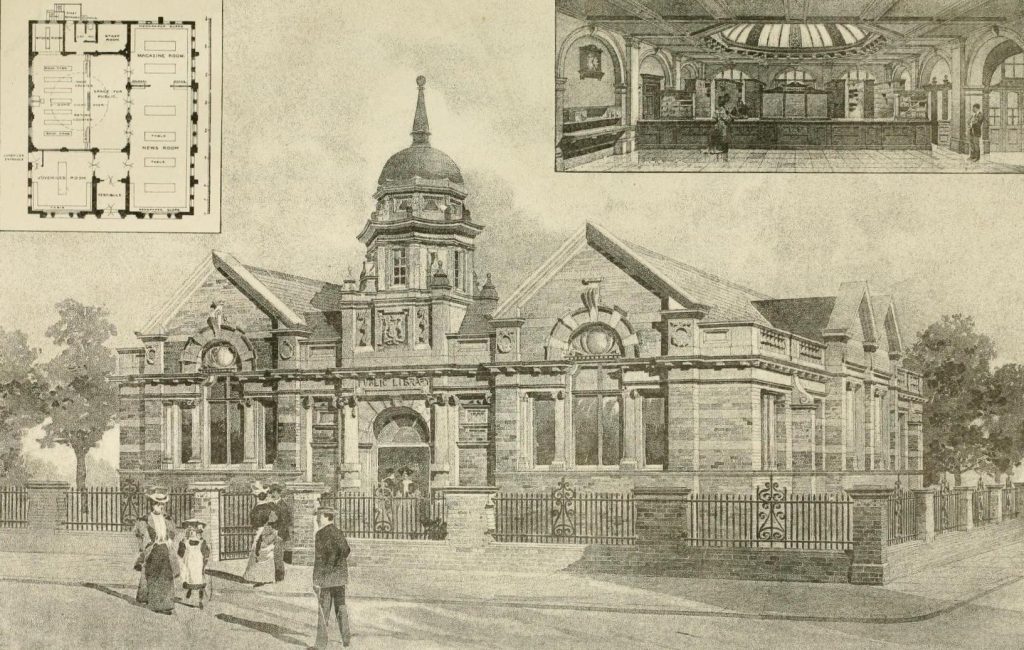
Torridon Road Library
An analysis of the 1911 Census reveals that the most common male and female adult names on the estate were William and Mary: on Broadfield Road for example, there were 31 Williams and 17 Marys – several of whom were married to each other! The typical St Germans family would have had a father working as a clerk in London, a mother bringing up their 2.4 children (called William and Dorothy), and they could attend a local church, take part in community events, borrow books from the Library, send the kids to a local school, and get their daily shopping done – all without leaving the estate. Even the researchers for Charles Booth were sounding more complimentary than when Ernest Aves visited a few years earlier, describing the estate as ‘…a new Garden of Eden with young married people and no public houses’.19
Archibald must have been pretty satisfied. Where 15 years ago there had been farmland, he had created a thriving, alcohol-free estate of low-density, well-built houses with over thirteen thousand inhabitants that was a model of Edwardian respectability. No doubt he’d also added to his fortune in the process – but whilst this wasn’t primarily a philanthropic project, it wasn’t simply a money-making exercise either. Corbett really had improved the lives of people who wouldn’t otherwise have been able to afford a home of their own.